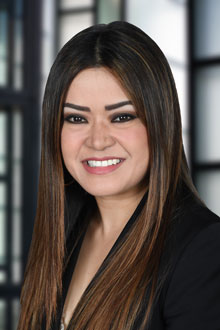New Design Patent Law Streamlines International Patent Application Process
Design patents protect the way an article looks, rather than the way it works. Exclusivity through design patents has become increasingly important in today’s hyper-competitive, high stakes environment. For example, the shapes of an IPad and an IPhone have significant value independent of their functional capabilities. Companies like Oakley and RayBan protect the shapes of their sunglasses through design patents. With the record high verdict handed down last year in the Apple v. Samsung case involving several of Apple’s design patents, it comes as no surprise that design patents have gained greater popularity and recognition as important intellectual property tools.
Recent changes to U.S. design patent law streamline the process of obtaining design patent protection worldwide. On May 13, 2015, the United States became a contracting party to the Geneva Act of the Hague Agreement Concerning the International Registration of Industrial Designs (the “Hague Agreement”). Now, U.S. applicants are able to acquire design patents in any of 49 countries or regions by filing a single international application directly with the World Intellectual Property Organization (WIPO) or through the United States Patent and Trademark Office (USPTO). Thus, instead of filing a separate application in each country of interest, as was the prior practice, a U.S. applicant proceeding under the Hague Agreement initiates the patenting process by filing a single international application. Each selected national or regional patent office then performs a substantive examination under its own law.
In addition to the U.S., the Hague Agreement currently includes the European Union, Japan, Norway, Switzerland, South Korea and numerous other countries. Canada, China, Australia, Brazil, Argentina and Russia are currently not contracting parties, though Canada, China, and Russia are reportedly contemplating joining in the near future.
The United States’ decision to become a contracting party has triggered many changes in the U.S. design patent law, including:
- The term of all U.S. design patents will be 15 years from the date of issue. This is an extension of one year from the current 14-year term.
- Color drawings and photographs will no longer require a petition and fee. Thus, a company seeking broader protection for a particular design may elect to file additional applications containing photographs or color drawings.
- The procedures for changing information on file for an international design application will also be streamlined. For example, if a subsequent change of ownership occurs with respect to a particular design, notification can be provided to a single source such as the USPTO.
- Now U.S. design patent applications will be published, which will now allow a patentee to recover reasonable royalty damages for certain activities of infringers occurring between the date of publication and the date of issuance of the patent (as is now permitted with utility patents).
Implementation of the Hague Agreement in the United States provides U.S. applicants a more streamlined way of protecting their designs in multiple countries. Any of the Lewis Brisbois intellectual property attorneys can assist companies contemplating seeking design patent protection to evaluate whether to take advantage of these recent changes as part of their IP strategy.
